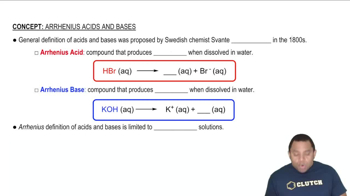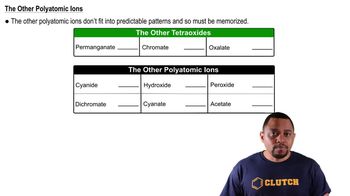Here are the essential concepts you must grasp in order to answer the question correctly.
Acid-Base Equilibria
Acid-base equilibria involve the transfer of protons (H+) between species in solution. In the case of sodium acetate, it acts as a weak base in water, where it can hydrolyze to produce acetate ions (CH3COO-) and hydroxide ions (OH-). Understanding the equilibrium between these species is crucial for calculating pH and concentrations.
Recommended video:
Arrhenius Acids and Bases
Hydrolysis of Acetate Ion
The acetate ion (CH3COO-) can undergo hydrolysis in water, reacting with water to form acetic acid (CH3COOH) and hydroxide ions (OH-). This reaction is essential for determining the pH of the solution, as it establishes the equilibrium that dictates the concentration of hydroxide ions, which in turn affects the pH.
Recommended video:
Equilibrium Constants
Equilibrium constants (K) quantify the ratio of concentrations of products to reactants at equilibrium for a given reaction. For the hydrolysis of acetate, the equilibrium constant (K_b) can be used to calculate the concentrations of all species in solution. This is vital for determining the pH, as it allows for the calculation of the extent of the hydrolysis reaction.
Recommended video:
 Verified step by step guidance
Verified step by step guidance


